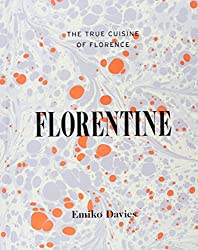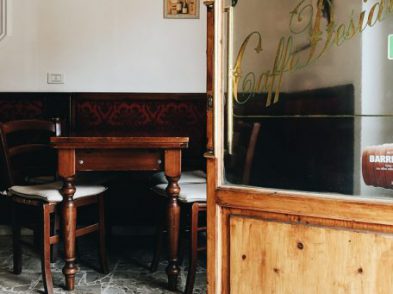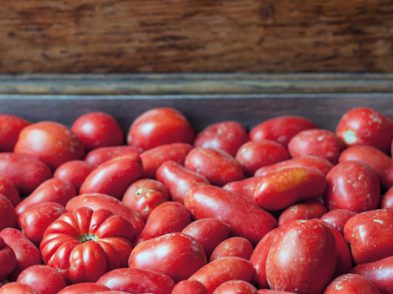For me, the one defining Tuscan dish is chicken liver pate served on crostini, also known as crostini di fegatini, crostini toscani or crostini neri. It is rustic, tasty, cheap and sensible (why throw away a perfectly good part of the chicken?), and it is on the menu of virtually every trattoria in Tuscany, not to mention on the table of every important family gathering in a Tuscan home.
What most don’t know is that some even credit Caterina de’ Medici for bringing the Tuscan favourite with her to France in the sixteenth century, only to have the French reinterpret this recipe eventually as the refined and luxurious foie gras.
In reality, foie gras-type preparations have a history that dates back 4,500 years, to the time when ancient Egyptians discovered how to fatten up their birds. Later, the Greeks and the Romans did the same, but it was a cookbook writer of ancient Rome, Apicius, who first described feeding geese with dried figs to develop those prized livers. The Romans called this dish iecur ficatum, and although ficatum means ‘fig’ in Latin, it was so closely associated with the liver delicacy that today the Italian word for liver is fegato, directly from the word for figs.
Lost, it seems, during the Middle Ages, only with the Florentine Renaissance and the revival of things from the ancient Roman past did the delicate liver dish reappear. It appears that those centuries the monks spent patiently translating Apicius’ cookbook came in handy. The writing was rediscovered along with science, art and architecture as well as a newfound fervor for gastronomy. Bartolomeo Scappi, Renaissance cookbook writer and chef for Pope Pius V wrote of obtaining enlarged goose livers from the Jewish ghetto in Venice; indeed, Jewish cuisine had preserved this ancient tradition for centuries.
While Italy was rediscovering its love for poultry liver, France was still unaware of the delights that were soon to become one of the country’s best-known dishes. That is until the arrival of the young Florentine noblewoman who became the queen consort and official foodie of France. Caterina de’ Medici was the essential ingredient in the gastronomic revolution that was the beginning of modern French cuisine. Her entourage of Tuscan chefs and her opulent banquets of elegant foods and new table manners transformed the way food was seen and eaten (including gelato: see TF 143). Paris was the perfect spot for this, too, just as Florence was the right place for an artistic Renaissance. An abundance of good, affordable food, available from all the best parts of France meant that the lively and open city of Paris in the sixteenth and seventeenth centuries was ready to experiment.
Tuscany still today does what it does best, and that’s the people’s food rather than that of kings and queens. Although in France foie gras developed as an extremely luxurious (and today controversial) dish, the simple crostini di fegatini di pollo of the Tuscans remained a down-to-earth recipe, with that slightly sweet flavour and appearance of an ancient dish born in the countryside to a population that had to be inventive with leftovers.
There are as many recipes for crostini di fegatini di pollo as there are grandmothers in Tuscany: the recipe varies from one household to the next. The one that many are familiar with includes a dash of vin santo, which gives that sweetness reminiscent of foie gras, and capers and anchovies, which provide trademark Tuscan saltiness.
In his 1891 cookbook, however, Pellegrino Artusi recommends quite a different version in his suggestions for the ideal lunch for the month of May. He lightens it up with a soffritto of finely diced vegetables and porcini mushrooms to add earthy flavour. Indeed, these additions are perfect for a picnic or summer barbeque.
RECIPE
Crostini di fegatini di pollo
Adapted from Pellgrino Artusi (Artusi does not give measurements in this recipe, so I have tried where necessary to give some indications.)
This will make about 20 crostini.
300 grams of chicken livers (make sure the bitter gall is removed from the liver)
1 slice of pancetta, chopped
1 shallot
½ stalk of celery
½ carrot
a handful of chopped parsley
1 tablespoon of butter
1 cup of chicken or vegetable stock
3 pieces of dried porcino mushrooms, soaked in warm water and finely chopped
1 tablespoon of breadcrumbs
Juice of one lemon
Olive oil
A thin loaf of bread, such as a baguette
Finely chop the shallot, celery, carrot and parsley and sauté gently in a pan with the butter and some olive oil with the pancetta. Season with a pinch of salt. When soft and golden, add the whole chicken livers. Halfway through cooking (about 3 minutes), remove the mixture from the pan and place on a chopping board together with the softened porcini mushrooms and finely chop everything into a rustic paste. If you prefer a smooth pate, you can purée the mixture with a hand blender directly in the pan rather than chopping it.
Return the chopped pate mixture to the pan, add the broth and finish cooking to reduce the liquid. This mixture should be quite tender and juicy so do not allow it to reduce so much that it becomes dry. Slice the baguette into 1cm thick slices. If you like, you can dip one side of the bread in some leftover broth before spooning a generous amount of warm pate onto each bread slice. Serve immediately.
Read more from Emiko Davies’ cookbook Florentine: The True Cuisine of Florence, published by Hardie Grant Books. Order your copy of Florentine: The True Cuisine of Florence here.









